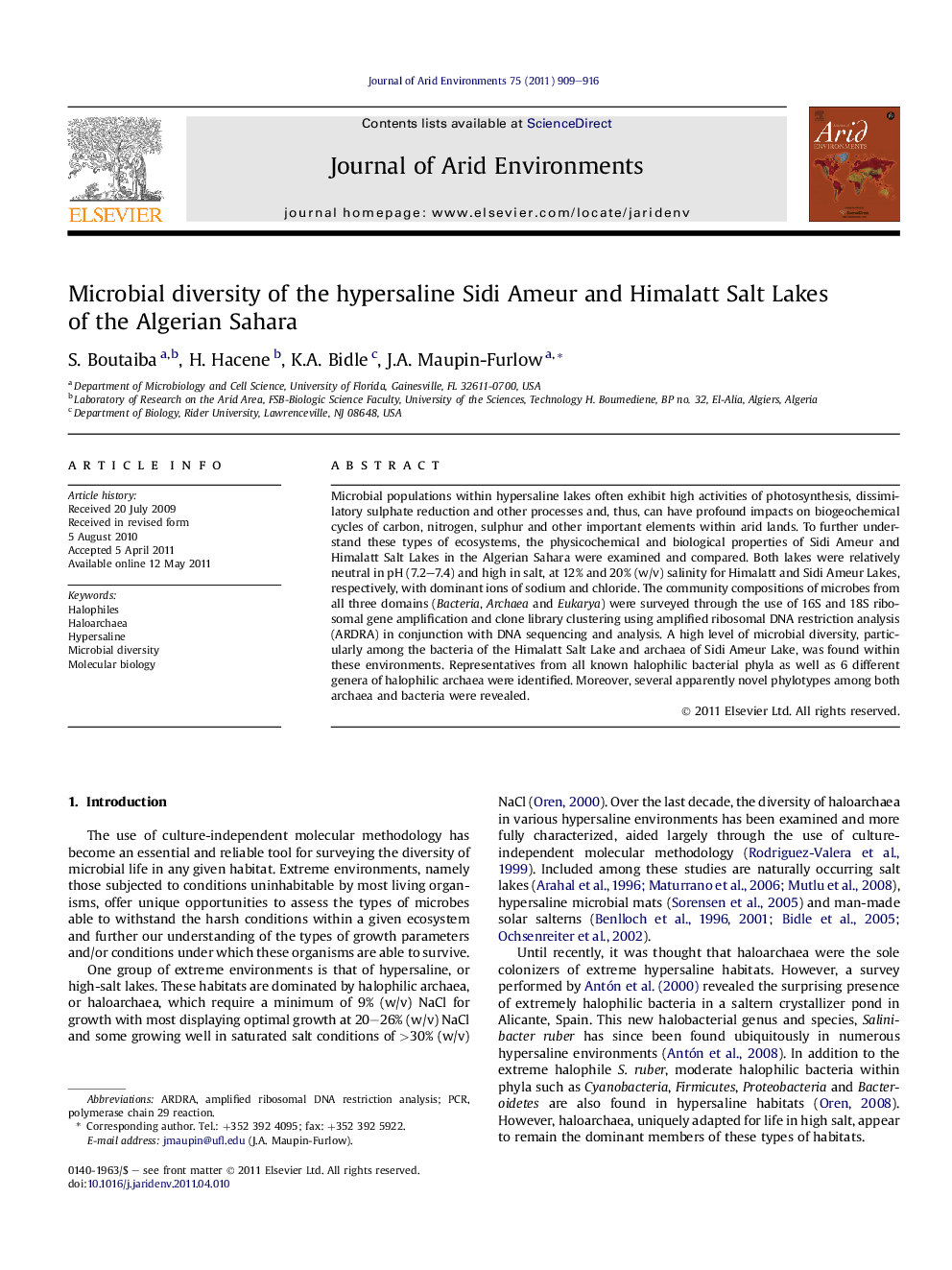| کد مقاله | کد نشریه | سال انتشار | مقاله انگلیسی | نسخه تمام متن |
|---|---|---|---|---|
| 4393645 | 1305496 | 2011 | 8 صفحه PDF | دانلود رایگان |

Microbial populations within hypersaline lakes often exhibit high activities of photosynthesis, dissimilatory sulphate reduction and other processes and, thus, can have profound impacts on biogeochemical cycles of carbon, nitrogen, sulphur and other important elements within arid lands. To further understand these types of ecosystems, the physicochemical and biological properties of Sidi Ameur and Himalatt Salt Lakes in the Algerian Sahara were examined and compared. Both lakes were relatively neutral in pH (7.2–7.4) and high in salt, at 12% and 20% (w/v) salinity for Himalatt and Sidi Ameur Lakes, respectively, with dominant ions of sodium and chloride. The community compositions of microbes from all three domains (Bacteria, Archaea and Eukarya) were surveyed through the use of 16S and 18S ribosomal gene amplification and clone library clustering using amplified ribosomal DNA restriction analysis (ARDRA) in conjunction with DNA sequencing and analysis. A high level of microbial diversity, particularly among the bacteria of the Himalatt Salt Lake and archaea of Sidi Ameur Lake, was found within these environments. Representatives from all known halophilic bacterial phyla as well as 6 different genera of halophilic archaea were identified. Moreover, several apparently novel phylotypes among both archaea and bacteria were revealed.
► Microbes in salt lakes can profoundly impact the biogeochemistry of arid lands.
► Sidi Ameur and Himalatt are poorly understood salt lakes in the Algerian Sahara.
► Physiochemical and biological properties of these lakes were determined and evaluated.
► The lakes were neutral in pH and high in salt, with Sidi Ameur a hypersaline lake.
► Microbial diversity was high in the lakes and provided insight into biogeochemical cycles.
Journal: Journal of Arid Environments - Volume 75, Issue 10, October 2011, Pages 909–916